#DrivingTechnology
Explore tagged Tumblr posts
Text
Tacho Premium Alerter
The Tacho Premium Alerter by Websat ensures your fleet complies with driving hours regulations through real-time tachograph alerts and download reminders. Stay ahead of compliance issues, reduce penalties, and protect your drivers with this smart and automated monitoring system.

#TachoPremiumAlerter#TachoAlert#TrafficSafety#RoadSafety#DrivingAlerts#PremiumAlerter#SafetyOnTheRoad#FleetManagement#SmartDriving#AlertSystem#DrivingTechnology#VehicleSafety#DriveSmart#SafetyFirst#InnovativeDriving#RoadAwareness#DrivingInnovation
0 notes
Text
Autonomous Driving Self-Driving Cars


Autonomous Driving: Progress and Challenges on the Road to Self-Driving Cars
1. What is Autonomous Driving? Autonomous Driving Self-Driving Cars involve using technology that allows vehicles to navigate and operate independently, without the need for human input. Essentially, autonomous vehicles (AVs) are outfitted with a mix of sensors, cameras, radar, and artificial intelligence (AI) to understand their environment, make decisions, and safely travel on roads. The Autonomous Driving Self-Driving Cars Society of Automotive Engineers (SAE) categorizes automation levels from Level 0 (no automation) to Level 5 (full automation). Currently, most vehicles on the road function at Level 0 or Level 1, where some driver assistance features, such as adaptive cruise control, are present, but the driver must maintain control at all times. Levels 2 and 3 provide more advanced driver assistance but still necessitate human oversight. In contrast, Levels 4 and 5 signify the highest degree of autonomous driving, where a vehicle can operate entirely on its own without any human involvement. Level 5 vehicles, commonly known as "fully autonomous," would not need a steering wheel or pedals and could function in any setting without human intervention. 2. Current Developments in Autonomous Driving Technology Autonomous driving technology has advanced significantly in recent years, with numerous companies leading the charge. Major tech firms like Google (through Waymo), Tesla, and Apple are heavily invested in developing self-driving systems, while established car manufacturers such as Ford, GM, and BMW are partnering with tech companies to introduce autonomous vehicles to the market. At present, we observe a combination of Level 2 and Level 3 technologies in commercial vehicles. Tesla's "Autopilot" and GM's "Super Cruise" serve as examples of driver assistance systems that provide limited autonomy, enabling vehicles to perform specific tasks like highway driving or maintaining lane position, while the human driver is still responsible for oversight. These technologies are already integrated into many consumer vehicles and mark a crucial step toward achieving fully autonomous driving. Moreover, companies like Waymo have started to roll out Level 4 autonomous taxis in select cities, allowing passengers to travel without a driver in certain well-mapped urban environments. These vehicles are outfitted with sophisticated sensors and AI systems capable of navigating complex traffic scenarios, stopping at traffic signals, and even identifying pedestrians and other obstacles in real-time. 3. Benefits of Autonomous Driving The potential of autonomous driving is significant, presenting numerous advantages for individuals and society as a whole. Autonomous Driving Self-Driving Cars Safety Improvements: A major driving force behind the development of self-driving cars is the opportunity to enhance road safety. Human error accounts for over 90% of traffic accidents, and autonomous vehicles could significantly lower this statistic. By employing sensors and artificial intelligence to detect and react to dangers, AVs may be able to eliminate frequent causes of accidents, including distracted driving, driving under the influence, and driver fatigue. Reduced Traffic Congestion: Autonomous vehicles can help alleviate traffic congestion by communicating with each other and coordinating their movements. Vehicle-to-vehicle communication (V2V) enables cars to exchange information about their speed, location, and intentions, which can optimize traffic flow and minimize bottlenecks. Improved Accessibility: Self-driving cars can greatly benefit individuals with disabilities, the elderly, and those who are unable to drive. By eliminating the need for a human driver, autonomous vehicles can enhance mobility and independence for these groups, making transportation more accessible. Environmental Impact: Autonomous driving has the potential to support sustainability initiatives. More efficient driving patterns, such as smoother acceleration and braking, can lead to reduced fuel consumption and lower emissions. Furthermore, self-driving cars could be integrated with electric vehicle (EV) technology, providing even greater environmental advantages. 4. Challenges Facing Autonomous Driving Despite the excitement surrounding autonomous driving, several challenges must be addressed before self-driving cars can be widely accepted. Technological Limitations: While autonomous vehicles are becoming more skilled at navigating controlled environments, they still struggle in complex and unpredictable situations. Factors like weather, road construction, and interactions with human drivers can create obstacles for AVs. Ensuring that these systems can handle all scenarios, including those that are ambiguous or unique, remains a significant challenge. Ethical and Legal Issues: The rollout of autonomous vehicles brings up numerous ethical and legal questions. For instance, in the case of an unavoidable crash, how should an AV decide whom or what to prioritize? The "trolley problem," a well-known ethical dilemma, poses real concerns for autonomous driving systems, and engineers must find ways to design systems that align with societal values. Additionally, there is a need for legal frameworks regarding liability and insurance for accidents involving AVs. Infrastructure and Regulation: Autonomous vehicles rely heavily on advanced infrastructure, such as high-definition maps, strong communication networks, and marked roads. Many regions still lack the necessary infrastructure to support large-scale autonomous driving. Moreover, regulatory bodies worldwide need to create clear and consistent guidelines for testing, deploying, and operating AVs to ensure safety and reliability. Public Trust and Acceptance: Perhaps the most significant barrier to the widespread adoption of autonomous vehicles is public trust. Many consumers remain skeptical of self-driving technology, particularly after highly publicized incidents involving autonomous test vehicles. To achieve broad acceptance, manufacturers and developers must focus on safety, transparency, and effective communication to reassure the public. 5. The Future of Autonomous Driving Although achieving full autonomy (Level 5) may still be a few years off, the shift towards self-driving cars is already in motion. In the coming years, we can anticipate a greater adoption of Level 3 and Level 4 autonomous systems, especially in urban settings and for specific applications like ride-hailing and freight transport. The evolution of autonomous driving will also significantly influence sectors beyond just automotive manufacturing. The emergence of self-driving vehicles could transform various fields, including insurance, logistics, urban planning, and mobility services. As these vehicles become more prevalent, new business models and economic opportunities will arise, prompting industries to adjust to this fast-changing environment. In the long run, self-driving cars have the potential to revolutionize transportation in ways we can only start to envision. The promise of safer, more efficient, and more accessible transportation could fundamentally change how we live and work, paving the way for a future where mobility is smarter, more sustainable, and more inclusive. Conclusion The Autonomous Driving Self-Driving Cars' path toward autonomous driving represents one of the most thrilling advancements in contemporary transportation. While there are still considerable challenges to address, the potential advantages—ranging from enhanced safety to improved accessibility—make the pursuit of self-driving technology a worthy endeavor. With ongoing progress in AI, machine learning, and sensor technology, we are edging closer to a reality where self-driving cars are part of our daily lives. As the industry evolves, we can expect autonomous vehicles to play a crucial role in transforming our transportation systems and our perceptions of mobility. Read the full article
0 notes
Text
Active safety features are revolutionizing road safety by helping drivers avoid accidents before they happen. These advanced systems provide better control, make cars smarter, and even take action when drivers fail to react in time. From ABS and Electronic Stability Control (ESC) to Adaptive Cruise Control (ACC) and Automatic Emergency Braking (AEB), these technologies are saving lives every day.
In this video, we explore how active safety features work, their real-world impact, and examples like the Tesla Model 3's AEB system that has drastically reduced rear-end collisions. Learn how these life-saving innovations are shaping the future of driving.
you’re interested in speaking with our experts from Scania, Mercedes, and Nissan, and scheduling a personalized career plan, call us at +91-9342691281 or register here: https://bit.ly/4fAf4z4
#AdaptiveCruiseControl#AEB#CarTech#SafetyInnovation#SafeDriving#TeslaSafety#DrivingTechnology#skilllync
0 notes
Text
#professionaldriver#drivingcareer#drivingindustry#transportationindustry#drivingprofession#drivingjob#drivingtips#drivingadvice#drivinginsights#drivingexperience#drivingculture#drivingcommunity#drivinglife#drivingpassion#drivinggoals#drivingjourney#drivinginspiration#drivingwisdom#drivingknowledge#drivingeducation#drivinggrowth#drivingdevelopment#drivingimpact#drivinginnovation#drivingtechnology#drivingfuture#drivingtrends#drivingchanges#drivingchallenges#drivingopportunities
0 notes
Link
#3Dprinting#ARHUD#augmentedrealityhead-updisplay#autonomousdriving#Cadillac#Cadillacconceptvehicle#CadillacOpulentVelocity#ElectricVehicle#EV#Futurride#GeneralMotors#SAELevel4#self-drivingtechnology#sustainablemobility#V-Series
0 notes
Text
AI-Driven Cars Have Transformed from Science Fiction to Street Reality in 2024
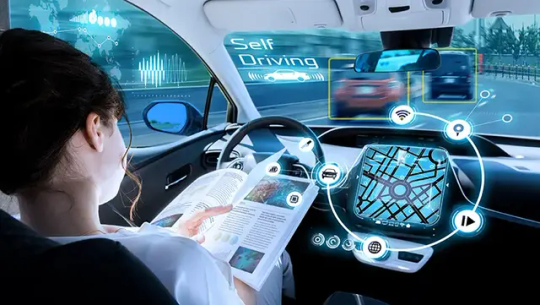
Have you ever caught yourself dreaming of driving around town in a self-driving car?Get ready, because this future is right around the corner, and you don't even know it, because the race to build cars is at its peak, and artificial intelligence is the central pillar.But before we dive headlong into this field, I'd like to stop for a moment and think about why anyone would want a self-driving car. Try to imagine this scenario: you're driving along the freeway and suddenly you see a chicken and a sloth playing pickleball on the side of the road (sorry, that's the best I could come up with). In a normal car, you'd probably be concentrating on the road and miss this strange sight (which, let's face it, sucks). But what if you were in a self-driving car? You'd be able to enjoy the show as you please, without fear of finding yourself in oncoming traffic.
The need for autonomous cars
Let's face it, the previous example was the lamest of them all, and it's certainly not the most appropriate. But I'd like you to keep this in mind: around 90% of car accidents in the United States are due to human error, according to the National Highway Traffic Safety Administration. Let's face it, we humans are broken drivers. We're (always) distracted, we're tired, we make bad decisions. Why do we behave as if we had 16 at the wheel?It's because of this kind of attitude that AI steps in, and promises to be wise and responsible adults in the car.the AI doesn't get distracted by an incredible song on the radio, or by a discussion about whether that's Ryan Reynolds we've just passed on the street - just the opposite of us. It keeps its eyes (that's a metaphor okay!) on the road at all times.
How does AI power autonomous vehicles?
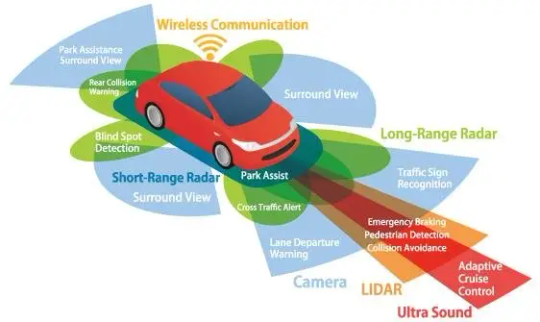
The question on everyone's mind is how can AI enable a car to drive itself? Well, it's not magic (even if it looks a little like magic, that is). Rather, it's about giving the car a 2.0 version of the five senses, and a brain to make sense of the hubbub.
Key AI Technologies Enabling Self-Driving Cars
The Car's Eyes and Ears
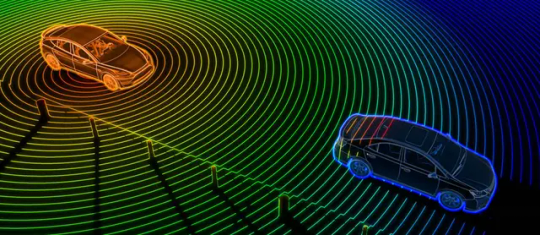
Lidar in Autonomous Driving: Pros, Cons & More dubizzle First of all, we have the car's eyes. They come in the form of cameras, radars and a device called LIDAR (which looks like a radar, but with lasers - in case you didn't know, this technology was used in Avengers Infinity War, the scene where we see Thanos' ship land on a city - it wasn't a photo, a video or even a 3D city). These sensors scan the environment all the time, looking for absolutely everything, whether it's other cars, pedestrians or even the chicken and sloth we mentioned earlier ( Good! I promise this is the last time we'll talk about this stuff)
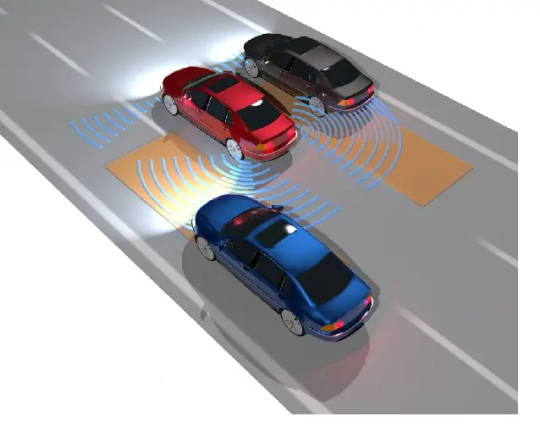
Vehicle tracking using ultrasonic sensors & joined particle weighting Semantic Scholar Next, we have the ears. These are ultrasonic sensors that work like bat sonar, bouncing sound waves off nearby targets to estimate their distance. And it's very useful for parking, because, let's be honest, not even the AI wants to parallel park if it can avoid it.then there's the sense of touch, which in this case consists of feeling the car's movements. Accelerometers and gyroscopes track the car's speed and position, a bit like the inner ear does for humans (but without the risk of discomfort in the car, otherwise it would have been weird).The Brains of the Operation
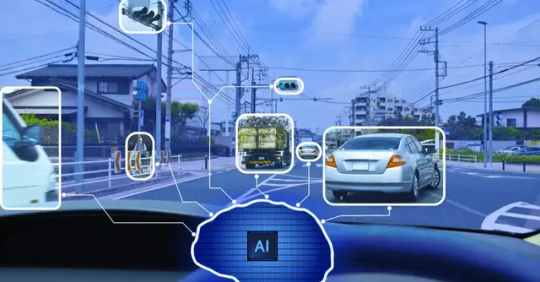
active learning and autonomous-vehicles-cloudfactory.com All this sensory information is fed to the car's brain, a sort of hyper-powerful on-board computer running artificial intelligence algorithms. And this is where the magic happens. The AI will use all this data to build a real-time 3D model of the world around the car. It's a bit like The Matrix, but instead of dodging bullets, it dodges potholes and pedestrians.Machine Learning: Practice Makes Perfect But it's not enough for AI to see the world, it has to understand it. For this, we need machine learning. When it analyzes millions of hours of driving data, AI will learn to recognize what I'll call patterns and make anticipations, or in more appropriate terms, predictions.If a car overtakes, is it likely to change lanes? That pedestrian, is he about to step off the sidewalk? AI simply asks itself these kinds of questions all the time, answering them on a regular basis and far more quickly than a human ever could.Path Planning and Navigation
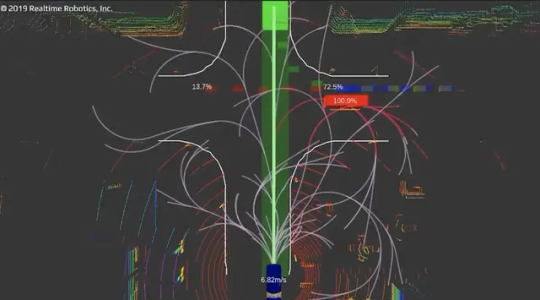
Autonomous Driving and the Need For Motion Planning- Realtime Robotics Once the AI has understood what's going on around it, it needs to decide what to do. This is where it really starts to get exciting (and a little philosophical, I'd say). The AI has to be programmed with a set of rules and priorities. Should it prefer the safety of its passengers to that of pedestrians? How should it handle moral situations like the famous cart problem?These are difficult questions, and it's because of situations like these that we're all driving around in self-driving cars.But progress is being made. Companies like Tesla, Waymo and Uber are traveling millions of kilometers in autonomous cars, and they're teaching their AIs how to handle all kinds of situations, from rush-hour traffic to unexpected weather conditions.
Levels of Vehicle Automation
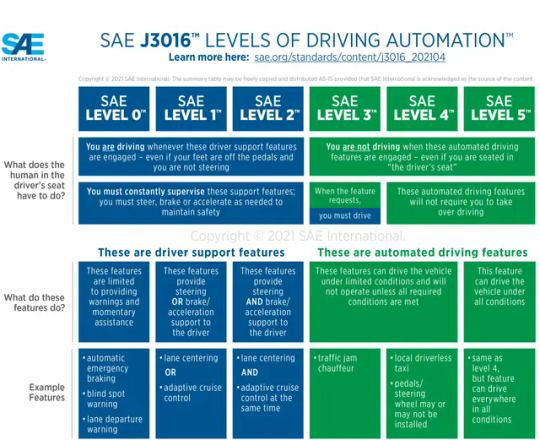
SAE Levels of Driving Automation™ Refined for Clarity and- SAE international Speaking of progress, let's talk about autonomous driving levels, because if you didn't already know, the Society of Automotive Engineers (SAE) has kindly and carefully only determined six levels for us, from 0 to 5Autonomy levels- Level 0 corresponds to grandfather's old pickup truck, with no automation whatsoever. No automation whatsoever. - Level 1 can, and I mean can, have cruise control or lane-keeping assistance. Other than that, zilch. - We're currently seeing a lot of Level 2 cars on the road, which can handle certain driving roles and nothing more, but still need a human to take over at any given moment. - It's at level 3 that we get to caress autonomous driving a little. These cars can handle the majority of driving tasks, and still need WE, the human saviors, to take over. - Level 4 cars can drive themselves in most conditions, but when the going gets tough and the going gets a bit red, like the weather, they gently give way to humans. - And level 5? This is the Holy Grail, the pearl of pearls, a car capable of driving itself, in all conditions, in all situations, without the need for human intervention.Now, I've had some personal experiences with this technology that I'd like to share. I recently test-drove a car with Level 2 autonomy, and let me tell you, it was both exhilarating and terrifying. Watching the steering wheel move on its own as the car navigated a curve was like witnessing magic. But I also found myself constantly hovering my hands over the wheel, ready to take control at a moment's notice. It's a stark reminder that we're still in a transitional phase, where AI driving automation in the automotive industry is impressive but not yet perfect.Technical ChallengesYou may be thinking: all this sounds cool, but when am I going to buy this thing? That's the million-dollar (or multi-billion-dollar) question.The truth is, we're not there yet. While companies like Tesla are still inventing advanced driving assistance systems, truly autonomous vehicles are still a long, long way off - in fact, they're still in the testing phase. Personally, I couldn't care less about autonomous cars, it's not something I'm looking forward to, but if autonomous cars tempt you, some analysts think that by 2030, up to 15% of cars sold could be fully autonomous. It may not sound like much, but in 2010 electric cars accounted for less than 1% of new car sales. Today, they account for almost 10% in many countries. Technology has a way of surprising us.The catch (there is always a catch)As always, and this is starting to get on my nerves, there are challenges to be met. One of the most important is ensuring that these AI drivers are capable of handling unpredictable real-world events. It's one thing to navigate a well-mapped city street, but not the same for a country road that's not on any map, or a construction zone that appears overnight. These are the kinds of scenarios that keep AI engineers up at night.There's also the question of public confidence. There are many who disagree or are afraid of entrusting absolute control to a computer. It's going to take time, time and more time (I don't think the 2030s are still relevant.) and proof of safety, so there's a lot of proof of safety before most of us feel comfortable taking a little nap while our car takes us to work. In any case, if we can be persuaded to implant a neuralinks chip in our brains, this trick will be a piece of cake.And yes! We're already entrusting our lives to artificial intelligence. Every time you board a commercial aircraft, you're trusting the artificial intelligence systems that manage much of the flight. And without lying to us, most of us trust Google Maps more than our own sense of direction.Is it worth fighting for?By the time we get to fully autonomous cars, we'll have traveled a whole long and boring, with plenty of potholes along the way. But if we consider the benefits it could bring, it might just be worth it. Isn't a world where road accidents are drastically reduced, where the elderly and disabled can move around freely, where traffic flows like water because every car communicates with every other car, worth it?Yes! it's worth working for, even if we have to deal with a few bugs along the way. After all, as any programmer will tell you, the first step in fixing a bug is to find it. Not to mention that test vehicles cover millions of miles every year, which could eliminate these bugs at a hell of a rate.So if you happen to be stuck in those pesky traffic jams and think about this article and the day when you'll be able to sit back and let your car do the driving, remember our little secret: that day will come. Maybe not tomorrow, maybe not next year, maybe not even in the next 10 years. But it's coming. And when it does, it will change the way we travel forever.
Conclusion
In the meantime, keep your eyes on the road. And if you happen to see a chicken and a sloth playing pickleball, well ( damn! I promised I wouldn't talk about that thing anymore)... maybe it's time to stop and check if you're dreaming. Or if you've stumbled across a Pixar movie. Either way, it might be best to let a human take the wheel on this particular journey. Read the full article
#AIadvancementsinautonomousvehiclenavigation#AIalgorithmsforself-drivingcars#AIdrivingautomationintheautomotiveindustry#AIinautonomousvehicles#AIinself-drivingcars#AI-basedautonomousvehiclesystems#AI-poweredself-drivingcarsoftware#AI'simpactonautonomousvehicletechnology#autonomousvehicles#benefitsofAIinautonomousdriving#futureofAIinself-drivingcars#self-drivingcarsafetywithAI#self-drivingcars#self-drivingtechnology#theroleofAIindevelopingself-drivingtechnology
0 notes
Text
The Role of AI in Modern Driver Education

Artificial Intelligence (AI) is rapidly transforming the way people learn to drive. From personalized instruction to advanced driving simulators, AI is introducing more effective and adaptive training methods that benefit both new and experienced drivers. As road conditions, vehicle technologies, and licensing standards evolve, AI helps bridge the gap between traditional driver education and modern driving realities.
One of the most noticeable innovations is AI-powered driving simulators . These systems replicate real-world driving scenarios—from highway merging to navigating complex intersections—without the risk of being on the road. AI adjusts the scenarios based on a learner's progress, making the experience more dynamic and tailored than standard classroom instruction or static videos.
Adaptive learning platforms are another major benefit. With AI, digital driver education tools can monitor a student's strengths and weaknesses and adjust the curriculum accordingly. For example, if a learner struggles with parallel parking or traffic signs, the system can increase practice time on those specific areas, maximizing efficiency and retention.
Instructors are also using AI tools for better assessments . Dashcam and telematics data can be analyzed to detect patterns such as hard braking, delayed reactions, or speed inconsistencies. This provides more objective feedback to students, ensuring safer and more informed learning. These insights can even help reduce anxiety, as learners receive constructive, data-backed recommendations instead of general criticism.
AI is also playing a role in preparing learners for written and theory tests . Intelligent quiz systems use algorithms to predict which questions a user is most likely to struggle with, allowing for smarter practice and better test outcomes. These tools can reduce the number of practice hours needed while still improving pass rates.
With the rise of semi-autonomous vehicles , driver education needs to expand beyond human-only control. AI helps learners understand how to interact with features like lane assist, adaptive cruise control, and emergency braking systems. Familiarity with this technology will be essential as more cars integrate these features by default.
The integration of AI also supports increased accessibility in driver training. For learners in remote areas or those with disabilities, AI-based platforms can bring high-quality education directly to their devices. Combined with mobile learning apps and voice-controlled instructions, driver training is becoming more inclusive than ever.
Whether you're just starting out or brushing up on your skills, AI-enhanced driver education is making the process smarter, safer, and more efficient. For trusted driver prep tools designed for Canadians, check out licenseprep.ca . Their AI-assisted practice tests and resources help you succeed at every stage of your driving journey.
#DriverEducation #AIinDriving #LearnToDriveSmart #DrivingTechnology #licenseprep #DrivingSchoolCanada #DigitalLearning
0 notes
Photo

The computer systems in modern cars have revolutionized the driving experience. From advanced safety features to intuitive navigation systems, computers have made our journeys safer and more enjoyable. With hashtag #automotiveinnovation, #drivingtechnology, #safetyfirst,
0 notes
Text
0 notes
Text
🚗🔗 Sticking it Together: Cruising through the Automotive Adhesives Market Adventure! 🌐💪
Hey Road Warriors! 🌈✨
Ready to explore the uncharted territories of automotive innovation? 🛣️💼 Buckle up for a thrilling ride into the Automotive Adhesives Market – where strength meets flexibility on the road! 🚀🚗
🌟 Bonding Beyond Boundaries! Join us in unraveling the secrets of Automotive Adhesives – the unsung heroes holding our vehicles together, making them lighter, safer, and more efficient! 🚗🌐
🚀 The Adhesive Evolution Unleashed! It's not just a market; it's a revolution in the way cars are built! 🌐🔧 From body structures to interiors, witness the rise of automotive adhesives as they redefine durability, performance, and design. 🏎️🛠️
🔥 Key Trends Accelerating the Adhesive Drive:
Lightweighting for Fuel Efficiency 🌍⚖️
Electric Vehicle Battery Assembly 🔋⚙️
Advanced Structural Bonding 🏗️🔄
Eco-Friendly Adhesive Solutions 🍃♻️
💡 Why It's a Game-Changer? Say goodbye to traditional welding and hello to a new era of automotive craftsmanship! 🚫🔩 The Automotive Adhesives Market is rewriting the rules, pushing the boundaries of what's possible in vehicle manufacturing. 🌟🚗
🌈 Join the Adhesive Revolution! Let's cruise through innovation together! 🚗💬 Share your thoughts on automotive technology, sustainability, and the incredible impact of adhesive solutions in the comments below. 🌐🛣️ Together, we're steering towards a future of automotive excellence! 💻🤝 #AdhesiveRevolution #AutoInnovation #DrivingTechnology 🚀🔗
0 notes
Photo

The Self Driving Car Scoop
With the way technology is headed, will we be seeing self-driving and parking cars become a common thing? Current limitations and recent accidents have left many skeptical with the technology.
0 notes
Photo
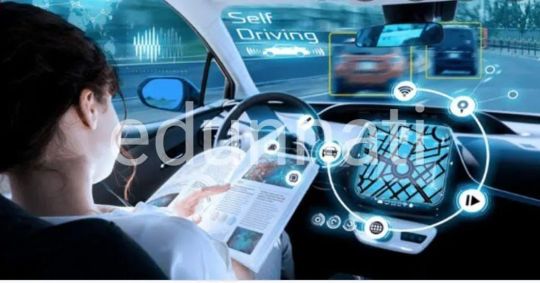
Revolutionize your commute with self-driving cars: the future is now! #SelfDrivingCars #AutonomousVehicles #FutureOfTransportation #MobilityRevolution #AIInTransportation #SafetyInDriving #RegulatoryIssues #PublicAcceptance #JobLosses #EthicalImplications #LegalImplications #TechnologyInnovation #EnvironmentalImpact #SharingEconomy #UrbanPlanning #TransportationShift #ArtificialIntelligence #MachineLearning #ComputerVision #InnovationInTransportation #InnovationInDriving #DrivingTechnology #TransportationTechnology #FutureOfDriving #TransportationPolicy #AutonomousCars #article #essays #article #edunnati https://www.instagram.com/p/CpIRt4fv7P2/?igshid=NGJjMDIxMWI=
#selfdrivingcars#autonomousvehicles#futureoftransportation#mobilityrevolution#aiintransportation#safetyindriving#regulatoryissues#publicacceptance#joblosses#ethicalimplications#legalimplications#technologyinnovation#environmentalimpact#sharingeconomy#urbanplanning#transportationshift#artificialintelligence#machinelearning#computervision#innovationintransportation#innovationindriving#drivingtechnology#transportationtechnology#futureofdriving#transportationpolicy#autonomouscars#article#essays#edunnati
0 notes
Text
Carlos Ghosn: Why car makers must adapt - or die
Image copyright GettyImages
Image caption Nissan has actually been evaluating a Leaf geared up with a self- driving system called Easy Ride established with IT firm DeNA.
The motor market is heading at speed to a technological transformation. Electrification and automation are the brand-new buzzwords. So can old- made car business make it through?
That’s a concern among the market’s most effective figures is eager to respond to.
CarlosGhosn is the chairman and president of the Alliance, a carmaking giant comprised of Renault, Nissan andMitsubishi It constructs more than 10 million automobiles a year.
This week, on a UK see, I asked him what does it cost? of an obstacle the future presents to standard car makers.
Change is definitely coming. Faced with ever- more stringent ecological guidelines and under extreme pressure from political leaders, producers are at last investing greatly in electrical cars and trucks.
They are likewise striving on automation. True “self-driving” cars and trucks might still be a long method off, however significantly intricate chauffeur- help systems are currently beginning the marketplace.
Meanwhilerobot- taxis, which can drive themselves in reasonably little, “geo-fenced” locations, are being evaluated in cities worldwide.
Then there is the result of the web. Cars are ending up being a growing number of “connected” and lots of now let chauffeurs unlock and begin their automobiles from their mobile phone. They likewise have access to a large selection of info and home entertainments systems.
Soon, it will be prevalent for cars and trucks to be fixed or upgraded from another location through a software application upgrade.
Image copyright GettyImages
Image caption CarlosGhosn is head of the Alliance, that includes Nissan, Renault andMitsubishi
Cars are quick ending up being not simply mechanical gadgets however advanced 4- wheeled computer systems.
So can standard carmakers adapt, or will they fall of modification, swept aside by tech- smart trespassers from Silicon Valley?
“Some old-fashioned car companies will not be able to adapt, without any doubt,” states Mr Ghosn.
“But not all car companies are old-fashioned, and not all will be unable to cope.”
TheAlliance does seem in an excellent position. Nissan currently produces the Leaf, the world’s finest- offering electrical car, while Renault makes the Zoe, another reasonably economical EV.
“We’re investing a lot,” states MrGhosn “We were the first company to offer mass market electric cars. Today we are the biggest seller and producer of electric cars.”
Given the issues Tesla has actually experienced trying to end up being a mass market manufacturer, that appears like a good position to be in.
Image copyright GettyImages
Autonomy is a various matter, nevertheless. Along with other carmakers, the Alliance is dealing with self- drivingtechnology
But the center of self- driving research study is undoubtedly Silicon Valley, and it is technology companies – like the Google- owned Waymo – that have a head start.
“For autonomous cars, the race is on – this is a technology race,” states MrGhosn “I think this is going to transform the industry.”
But that does not always indicate the standard carmakers will lose. Instead, he recommends they will coordinate with the newbies.
“I don’t think there is a threat to the car industry, because the car industry is embracing the changes”, he states.
“And it’s not embracing the changes by just focusing on itself. It’s embracing them by opening up to the tech companies, to start-ups, to partners, in order to make the changes in the most effective way possible.”
Image copyright GettyImages
Image caption ElonMusk’s Tesla is pinning its hopes on the success of the mass- market Model 3.
TheAlliance currently has an existence in SiliconValley Its research study centre in Sunnyvale was established in 2013 with the objective of taking advantage of the proficiency of the area – and developing collaborations with universities, labs and start- ups.
SoMr Ghosn states he is “not pessimistic”.
“Obviously, for those who ignore the change, or avoid the change, it’s going to be terrible,” he includes.
“For those who embrace it, obviously it’s going to require a lot of effort, a lot of investment. But it could give them more opportunities for growth than we’ve ever had in the past.”
Nevertheless, one location of modification does appear to threaten the extremely structures of the market.
The relocation to shared- utilize automobiles is collecting momentum. Ride hailing apps such as Uber and Lyft have actually currently shown preferred, as have brief- term car rental plans.
Image copyright GettyImages
Some professionals think that the advancement of automated taxis will accelerate this procedure, which the days of individual car ownership are numbered, a minimum of in cities.
That would plainly threaten car producers, since the marketplace for brand-new cars and trucks would diminish. But it is a concept that the one in charge of Nissan and Renault provides brief shrift.
“I don’t believe in this. In China you still have one car for five people, in Indonesia it’s one car for 50 people, in India one car for 20 people. So we are far from saturated in terms of ownership of cars.”
Meanwhile, he states, developing systems created for the sharing economy will supply brand-new opportunities for development.
“Ownership of cars will continue. Maybe it’ll be limited in mature markets to the benefit of shared mobility services. But we’re going to be involved in both sides.”
New post published on: https://www.livescience.tech/2018/07/01/carlos-ghosn-why-car-makers-must-adapt-or-die/
0 notes
Text
#futureofdriving#drivingtrends#drivingprofession#drivingindustry#automotiveindustry#transportationindustry#drivingtechnology#drivercareer#drivingjobs#drivinginnovation#drivingindustryinsights#drivingindustrynews#drivingindustryupdates#drivingindustryforecast#drivingindustrygrowth#drivingindustryopportunities#drivingindustrychallenges#drivingindustrydisruption#drivingindustryevolution#drivingindustrytransformation#drivingindustryoutlook#drivingindustryanalysis#drivingindustryreport#drivingindustryresearch#drivingindustrydata#drivingindustrytrends#drivingindustryfuture#drivingindustryinsights2024#drivingindustryforecast2024#drivingindustrygrowth2024
0 notes
Text
Why Ford Motor Company's Stock (F) Is Cool Again
After years of languishing, Ford Motor Company's stock (F) is on the rise again after the company has refocused on next-generation vehicles in new markets. #cars #stocks Read the full article
0 notes
Text
VW likely to Ask Jailed Stadler to Quit -AUTOMOTIVE NEWS TV Chanel/CAR NEWS
youtube
thanks for joining us on this Fridayedition of first shift I’m Jennifer bonkcoming up a look at luxury loyalty butlet’s begin with your top news storiesthe Volkswagen Supervisory Board willdiscuss the future of rupert’s toddlerthe suspended chief executive of premiumbrand OD at a meeting on Monday thisaccording to a report in the Germanmagazine Der Spiegel the magazine saysthe board is due to decide whetherSadler should give up his position hehas been in police custody sincemid-june as part of a broader probe intoemissions cheating at audi Spiegel saysit’s probable styler will be asked torelinquish the role inside sources closeto the company Volkswagen declined tocomment in July Videl be recruited BMWengine development and purchasing expertMarcus newsmen who has been touted as apotential successor to StadlerVolkswagen Group wants to form analliance with other automakers to createan industry standard for self-drivingtechnology in executive tells Reutersthat VW believes such a move would givecompanies better legal protectionfollowing accidents involving a V’saccording to the executive VW hasentered discussions with potentialpartners the talks centering on costsharing risk sharing and other liabilityissues mourners gathering at a Cathedralin Turin today for the first of twomemorial services for late Fiat ChryslerCEO Sergio Marchionne FCA chairman JohnElgin and Marshalls successor mike manlyamong those in attendanceMarchione died on July 25th inSwitzerland following shoulder surgerywe’ll bring you more on the service thisafternoon on Auto news now Hyundai MotorGroup has promoted heir apparent Eastson Chun to a role of overseeing theconglomerate this moves him a stepcloser to sayseating his 80 year old father chairmanmong-koo Chung the 47 year old son isvice chairman of the group’s crown jewelHyundai Motor Company he now becomesexecutive vice chair of the parentcompany Hyundai Motor Group says today’smove is in response to quotedeteriorating global trade issues andchanges in competitive dynamics in majormarkets charge point is planning a near50 fold increase in its global networkof electric vehicle charging locationsthe Silicon Valley company whoseinvestors include BMW Daimler andSiemens is aiming for 2. 5 millioncharging points by 2025 that’s up fromabout 53 thousand now and speaking ofelectrification furniture retailer IKEAGroup says that by 2020 home deliveriesin five urban areas including LosAngeles and New York will all be done byv’s or other zero emissions means thestate of the US luxury marketedmunds. com is taking a look at thatmatter in a new report and it finds thatas the price gap between luxury vehiclesand mainstream rides are shrinking thiscould pose a risk to luxury brandsspecifically as shopper preferencescontinue to move toward larger vehiclesfor example Edmunds finds that a midsizecar from a luxury brand sells for 107percent more than one from a mainstreambrand but a midsize SUV from a luxurymarque only sells for 48 percent morethan one from a mass-market brandEdmunds Jeremy Acevedo says as luxurybrands push into vehicle segmentsdominated by more premium offerings frommainstream brands they’re going to quotehave to work harder to convince shoppersthe brand cachet is worth paying extrafor some other highlights from thereport when it comes to luring shopperswho stick strictly to luxury JaguarPorsche and BIAw do the best job brands that are mostlikely to attract customers who are alsoCross shopping mainstream brands LincolnVolvo and Acura through August usdeliveries of luxury brands as Jeff 0. 3%to 1. 3 million vehicles accounting foreleven point four percent of the marketfinally a first shift footnote is Fordrevamps in Detroit’s Michigan CentralStation at recently bought it’s savingpieces of the abandoned stations historyin the form of jewelryFord commissioning rebel now a localsocial enterprise to repurpose layers offallen graffiti paint from inside thebuilding into pins cufflinks and morethe collection is a limited run of threehundred pieces all proceeds supportlocal nonprofits that wraps up thisweek’s first shift thanks for watchingwe’ll see you back here on Monday
//<![CDATA[ featureBoxVar = ""; //]]> source https://cardetailingphoenix.com/index.php/2018/09/19/vw-likely-to-ask-jailed-stadler-to-quit-automotive-news-tv-chanel-car-news/ from Auto Dealing Services http://cardetailingphx.blogspot.com/2018/09/vw-likely-to-ask-jailed-stadler-to-quit.html
0 notes